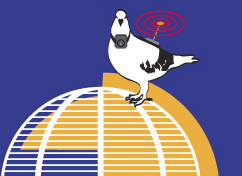lena welty
Moderator

Moderator
| Posts: 18 |  |
Karma: 0
|
Interactive City Welcome - 2006/04/24 16:07
Welcome everyone to the Interactive City forum, the first of the ISEA2006 online forums. We will be posting here for a week between April 24 to 30, and I am looking forward to the beginnings of an animated conversation that we can extend in San Jose during the events in August and beyond.
I would especially like to welcome the artist participants for the Interactive City forum, Mirjam Struppek, Tapio Mäkelä, Alison Sant, and Franck Ancel, whose works represent a broad and amazingly creative engagement with issues surrounding the formation of the contemporary city and technology. I strongly encourage visitors to read their abstracts posted at http://01sj.org/content/blogcategory/135/144/ and take the opportunity to join with them in an open and ranging conversation about their work and broader positions on the interactive city.
The Interactive City theme comes from a desire to read the city anew, “Something that can respond to our dreams. Something that will transform with us, not just perform change on us, like an operation.” And therein lies the potential for the creation not only of a new environment, but a new context. There have been many inspired treatises and imaginings of the city, from Le Corbusier’s Radiant City awash with the energy of new machines; meticulously rational implying an efficiency based in the technotopian dreams of the new machine age, to Jane Jacobs organic city, organized through the millions of small scale everyday interactions of people to people; the expression of the socio-organic body. Both these extremes situate the city as the product of forces, industrial and social, but also as something beyond our immediate reach.
Todays city, and the Interactive City theme imagines a different relationship to the city as an interface, “not merely a palimpsest of our desires but an active participant in their formation” and encourages us to locate, express, explore and celebrate our public and personal selves in that relationship. Tapio Mäkelä’s work explores this social nexus, while Mirjam Struppek’s develops these themes through the material/immaterial moment of the public interface. For me, this is the key difference between previous models of the city, where analogies to vehicles and bodies describe the city as a product of events and machines, now the city is an active participant in the creation of events “that matter”. We are thinking beyond descriptive formal models of the city to the potential of an engaged, collaborative and participatory moment.
While the intensive gaze frames the city in one way, extensively the context has changed also. Cities exist within flows of trans-regional and international relations as Manuel Castells amongst others, have so eloquently described. The technologies that frame our lives in the city, are not limited by traditional spatial boundaries, and in many cases flow over and beyond the old city walls. This is the site of Frank Ancel’s global networks, and suggested in Alison Sant’s city beyond the geography of the basemap. Perhaps one of the first questions we might ask of the city today is where does the city begin and end?
To begin the conversations of this forum, I would like to ask each artist author to give a brief description, not necessarily of their paper but of the questions on the city and technology that motivate their work. From there, let the conversations begin and flow where they may.
Anthony Burke
Oakland
|
